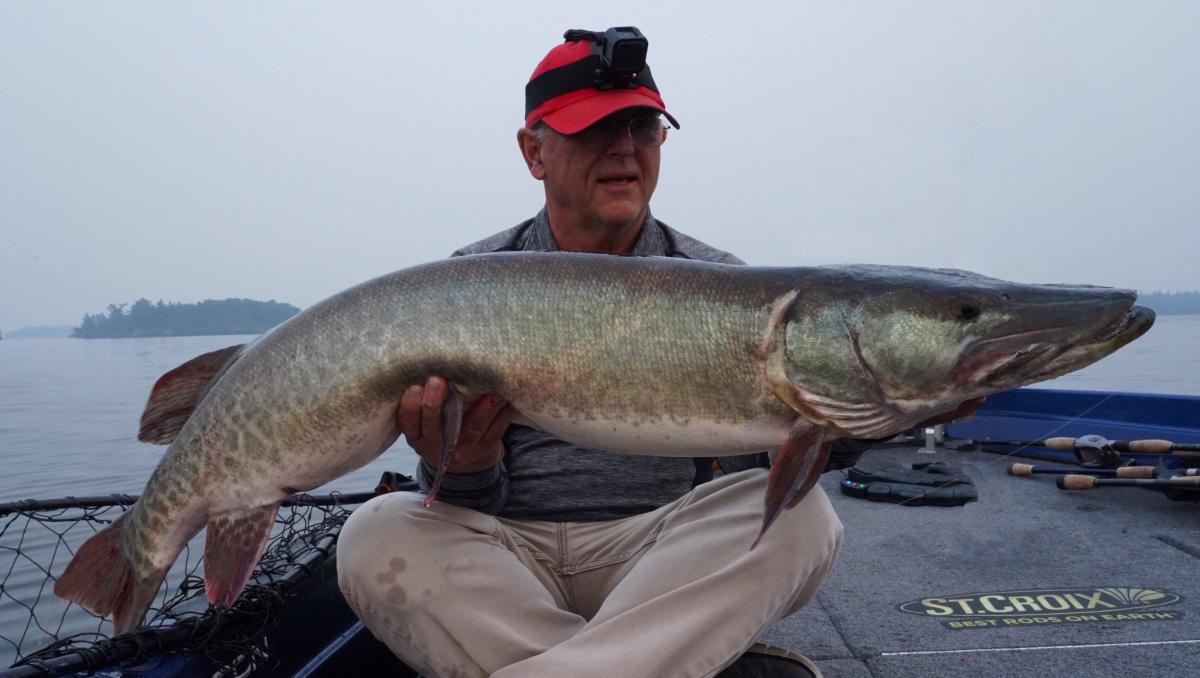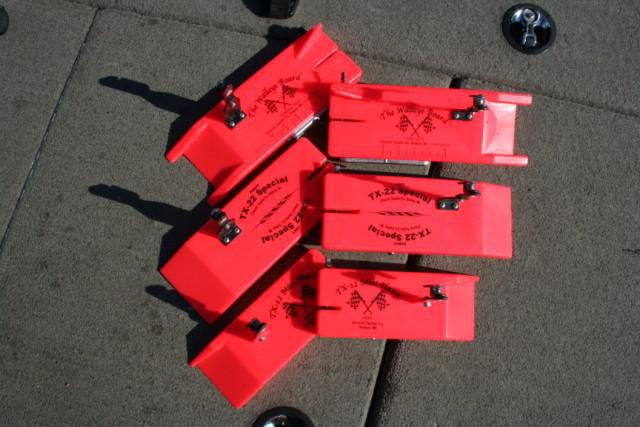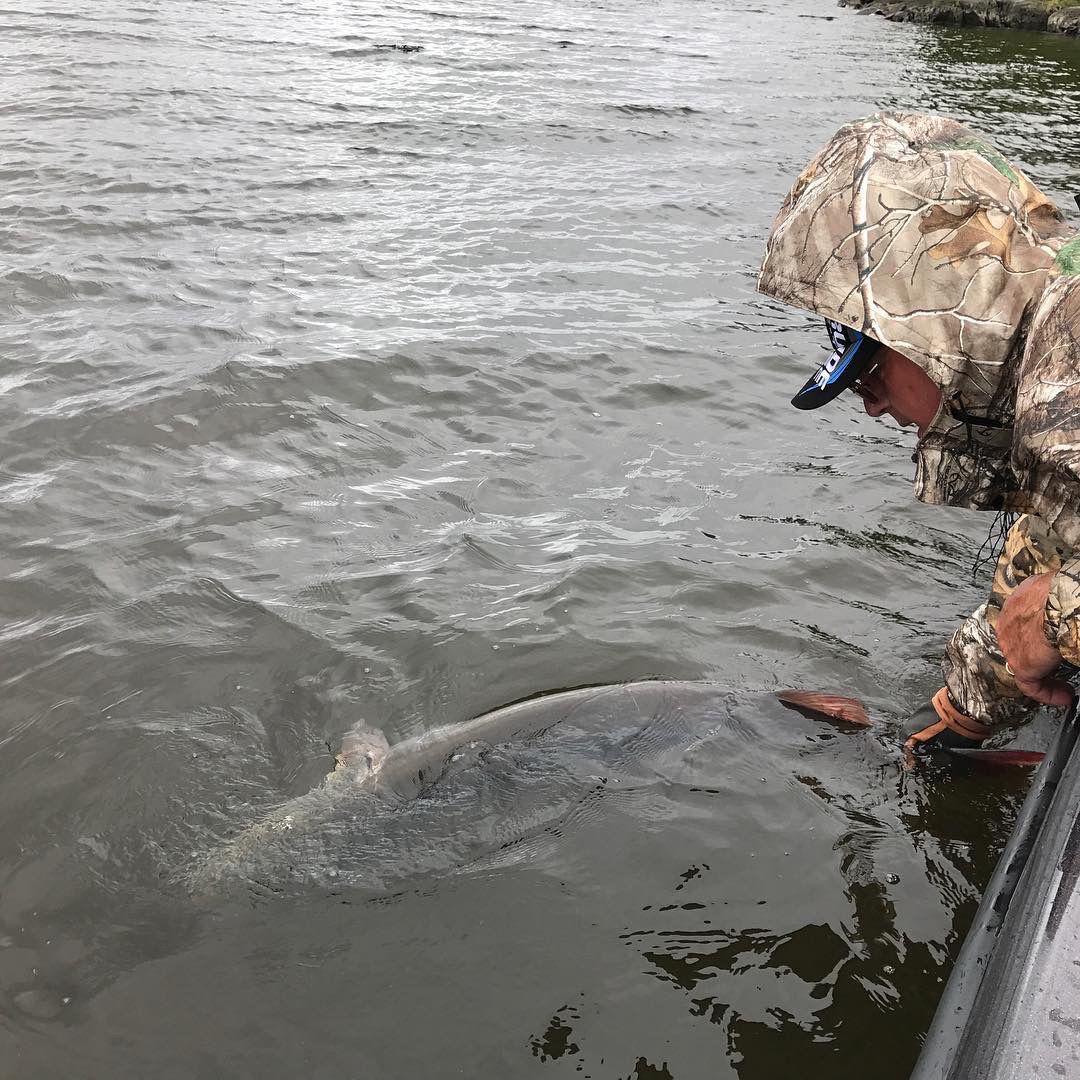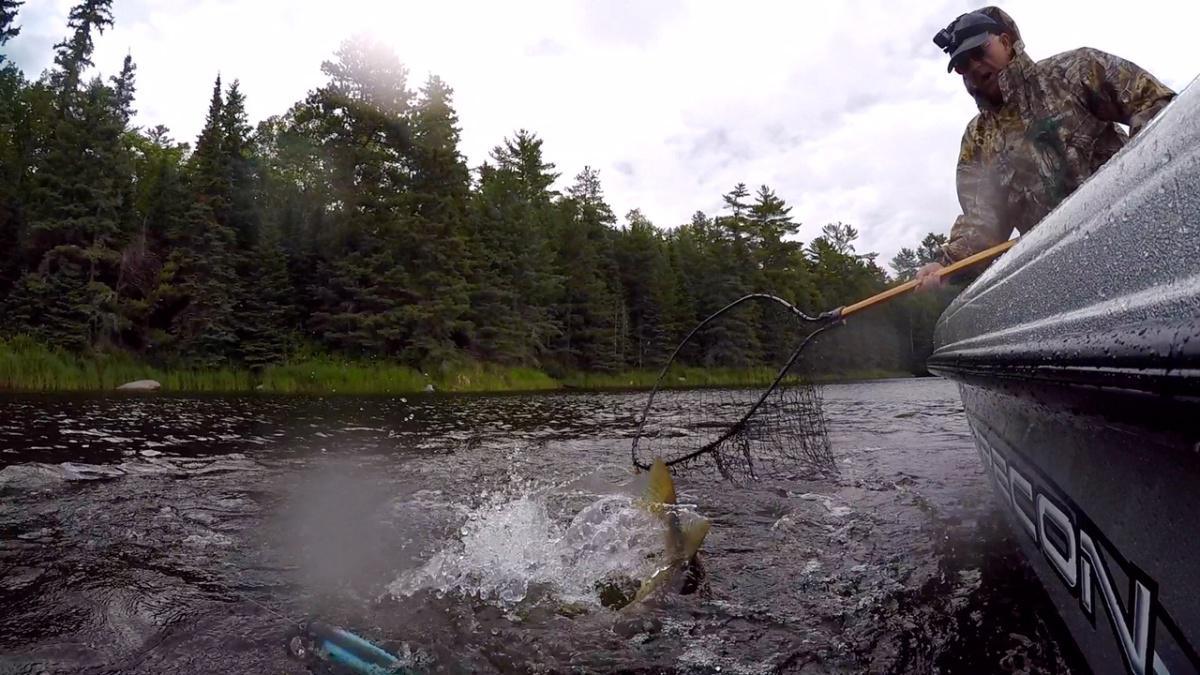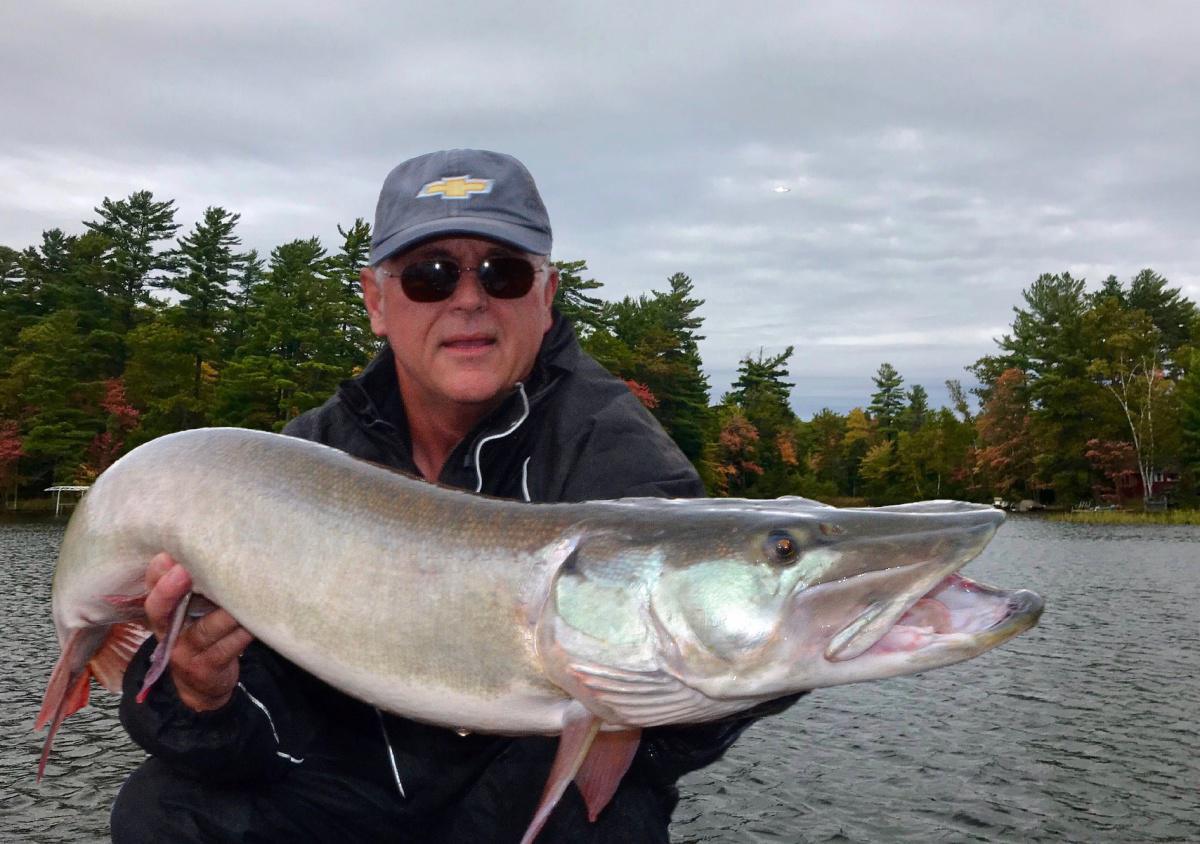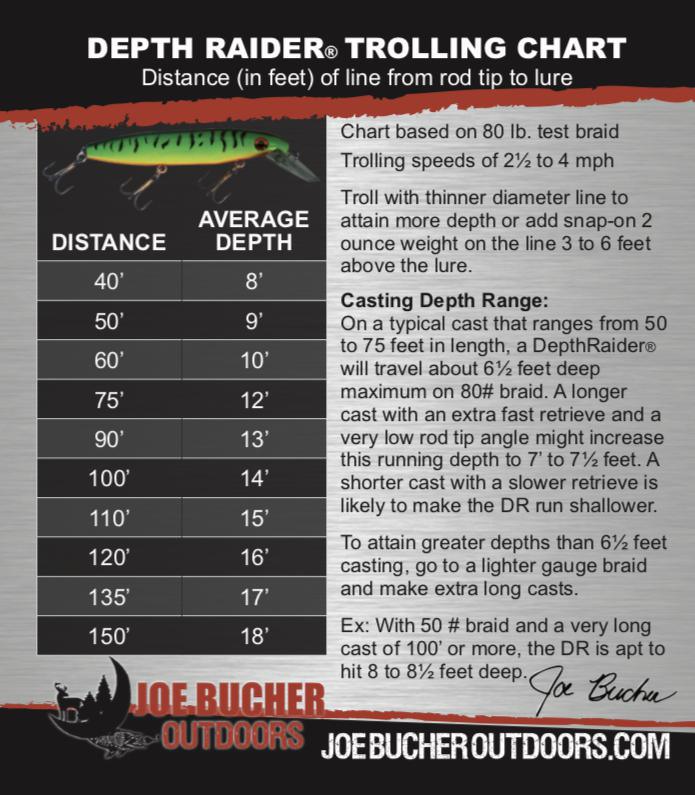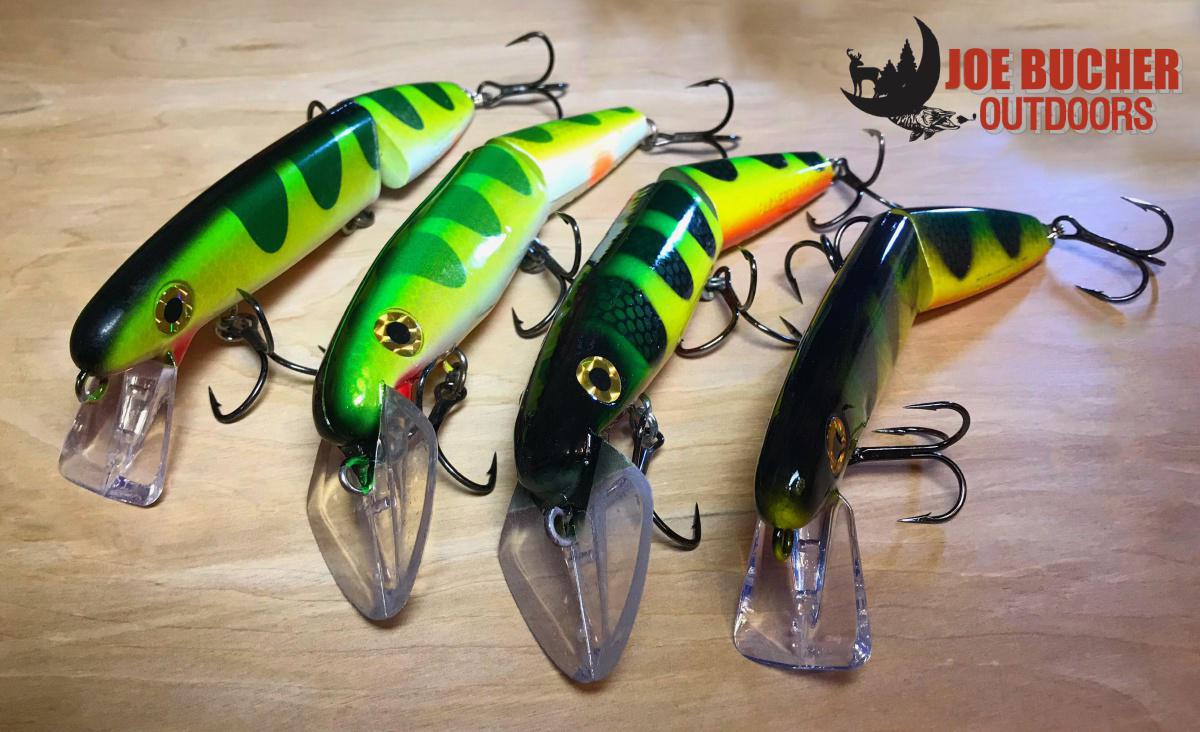So many of today's Midwestern musky anglers are diehard casters. Some even consider trolling taboo, but that certainly wouldn’t be me. My fishing education background is principally centered around the foundations of Buck Perry, stressing the basic fact that "the fish are either deep, shallow, or somewhere in between".
In order to be successful, one must choose a method (technique) that best suites the purpose. If the fish are in shallow cover, casting is the way to go. If they're deep, trolling is the only way to effectively present a lure to them. Casting and trolling are all the same to me. The bottom line is production -- catching fish. This was and still is my philosophy.
Is casting a more exciting way to catch ‘em? Under most situations, yes. Is topwater fishing way more exciting than crankin’ a deep diver? Yes, absolutely. Unfortunately, I can’t catch every musky on a topwater lure.
I’d like to, but it just isn’t possible. While I’d prefer to catch every fish on a TopRaider, for example, the location of the fish and their moods might dictate that I choose a less exciting technique that is simply more productive.
The bottom line is--one needs to do what it takes to make something happen. And that's what trolling is all about -- Efficient use of time and resources. Deep open water fish, whether they're muskies or salmon, can not always be caught effectively by casting. Sometimes muskies are deeper than our conventional casting lures travel and they are also spread out. If they are relating to nothing more than a school of baitfish hovering across a massive, featureless flat it will be tough to tag ‘em with conventional casting methods. You can cast for them 'til your arms fall off, and you might occasionally tag one or two. But you'll miss out on the majority of them. Trolling in this situation is the way to go. The bottom line is -- trolling takes fish that may not be accessible with standard casting methods. The versatile angler knows this and takes full advantage of it.
OPEN WATER SUSPENDED FALL MUSKIES :
Muskies suspend over open water a lot more in the fall than any of us first assumed. I’ve been writing about suspended muskies now for nearly two decades, and that includes some detailed articles on fall suspended muskies, but few anglers still take advantage of these mysterious open water predators. Location is the biggest problem with deep, open water muskies.
Since the angler has little to relate to, especially when compared to traditional shallow areas with recognizable underwater features such as a visible weed clump, a fallen tree, or a big rock, he must rely on covering as much water as quickly and efficiently as possible. This is best done by utilizing devices called planer boards, and a selection of big, crankbaits running at various depths.
The planer board serves a key function here. It forces lures out off to one side of the boat, thus increasing coverage, and keeping the line(s) and lure(s) away from the outboard motor path at all times. Running lures off planer boards on both sides of the boat can increase a typical trolling pass swath from 10 feet wide to 100 feet or more. This approach alone really increases the angler's chances of scoring on suspended fish.
There are basically two styles of planer boards: 1) independent, and 2) in-line. The independent planer is much larger than the latter and is anchored off a central mast with a cord. A number of lines can be attached to this cord at various positions. They break completely free of the cord after a strike. The large independent planer board requires a big water trolling boat, and therefore is most commonly used on the Great Lakes. However, the smaller in-line planer attaches directly to your line and can be used by anyone on any sized rig. This is the board I prefer for this technique.
There are a number of excellent in-line planer boards available today. Some of the more popular ones are: Church, Sideliner, Rover, and Off-Shore Board. I particularly like the Church brand since it has the best "board clip" mechanism, which is basically a pinch-on close pin style clip. An in-line planer board attaches directly to the fishing line much like a snap-on bobber. It is a single line planer, which really simplifies things for the small boat angler. Just about any in-line planer can be rigged in a variety of ways, but ardent musky trollers prefer some specifics.
Muskies also require a few special planer board tricks. Some of the accepted rigging techniques used successfully for salmon and trout with boards are less productive on muskies. For one, instead of rigging the board to pop free after the strike, ardent muskie board trollers have found this not to be a high percentage policy for their toothy favorites. Muskies require much more hook set power and tension in order to get hooked initially, and stay hooked. It's best, in this instance, to attach the board very snugly to the line so it can not break free after a strike. Don't worry about the board being in the way after a fish hits your lure. Simply crank the board back to your rod tip, with the fish attached, and disconnect it at that point. Veteran musky board trollers clamp the boards on snugly so they will not release after a hard strike, nor during battle. The board is usually removed once it is cranked up to the rod tip.
Line distance, line diameter, and lead weighting can all greatly affect how deep a lure runs off a planer board. Basically speaking, the more line out, the deeper a lure will travel; thinner diameter lines also increase running depth; and additional weight will also add diving capability to your lure. And, while some anglers aren't overly concerned about how deep their lures are actually running, a lot more fish can be taken and more precise trolling passes made if you know these variables. It's a good idea to take the time to develop your own personal depth chart of your favorite lures. Make a blow-up version of it and laminate it for in-boat use. It will become an invaluable tool.
Downriggers do have a place in this style of deep water trolling. A small handful of trollers are successfully using downriggers for muskies. While this seems like a good way to get lures down to precise depths, downriggers have a few drawbacks for inland lake trolling. For one, they are only good on deep open flats with a consistent bottom. Areas with a lot of humps, bars and ridges make downrigger trolling difficult since the big lead downrigger ball is likely to get hung up on these obstructions.
You also lose all rod tip response when you run a lure off a downrigger. This eliminates being able to make a quick visual check on whether your lure is debris-free and working properly. This, of course, is also a drawback to the planer board. A flat line rod, on the other hand, (one that is connected directly to the lure with no boards or downriggers in between), shows a distinct rod tip vibration transmitted directly from the lure.
Most ardent deep water musky trollers are more in favor of running their lures off lead-core or wire line for additional depth control. Both lead-core and wire line double the attainable depths achievable over comparable mono. This enables one to adequately get a crankbait down to desired depths. Using heavy weights can accomplish the same thing basically, also. Offshore Tackle has a clever snap-on weighting system that is quickly become the favorite of many open water trollers no matter what the species. It's easy to add two to five ounces of lead anywhere you'd like to achieve greater depths. This system utilizes the same basic concept they've popularized on their boards; a close pin style clip.
Combining both planer boards and lead-core line rigs into one trolling system is the ideal way to maximize the potential of any trolling run. The board rigs can then be utilized to cover shallow to mid depth ranges, while the wire/lead-core lines probe the deepest depths. By the way the amount of lines allowed per person varies greatly between states and Canadian provinces.
Finally, it should be noted that just because a musky is suspended doesn’t necessarily mean it is deep. Quite often it is just the opposite. In fact, if you are not tagging fish in open water after a few hours of trolling, it is a good bet that your lines are actually set too deep – not too shallow. One of the hottest bites for suspended fall muskies in North America occurs in Green Bay, Wisconsin every fall. Most of the time these fish are shallow – very shallow. The best baits here are shallow running lures that are set only 15 to 30 feet behind the board.
Trolling for suspended muskies is a specialized tactic that surely has its place and time. It is sure to work on nearly all musky waters under the right circumstances; however it really shines in hard fished lakes that feature gin clear water and heavy boat traffic. Yet, large, lake trout style Canadian waters are equally set up for this system. So are the big rivers and lakes of eastern U.S. and Canada. Anytime the musky bite appears to be dead on conventional structure, “break out the boards” and make a few passes over the open water. You might be surprised with the results.
FALL MUSKIES TRAVEL IN PACKS:
For decades it was commonly accepted by both anglers and biologists that muskies were not school oriented, like most other fish species, in any sense of the word. The general consensus was big muskies were overly dominant lone wolves that chased all other predators out of their territory. While it is not disputable that a big musky in shallow water occasionally holds for several days on a particular spot, it is unlikely that it is guarding the spot nor is it chasing all other fish out. In reality this territorial looking behavior is nothing more than a dominant fish being in a given area containing food. When the food is gone, so is the dominant fish. The size of the musky on this spot might change throughout the month depending upon the moon phase, as well. Less fish are apt to appear on the same spot between moon peaks. The biggest fish seem to show up at optimum times coinciding with a full or new moon peak.
In an open water environment, several muskies will be "hanging out" with a dominant individual in a loosely formed group or what I like to call a "wolf pack". When the dominant fish is not present or active, or has been caught, the other fish in the group become more active. This relationship is important to understand, since it answers lots of questions about behavior no matter what the situation. Unless there are very low populations of muskies present in a body of water, communicable wolf packs are common.
BAITFISH RELATIONSHIPS:
Any body of water, shallow or deep, containing any type of minnow, panfish, or smaller gamefish that suspends over open water can and usually will draw muskies into suspension, as well. Basically these big toothy
critters are creatures of habit or better put freshwater's top "predator of prey". Whether it's ciscoes, whitefish, perch, walleyes, shad, crappies or trout; if they suspend over open water, Mr. Big will surely be suspended right alongside them.
Exactly where these fish suspend also relates to the suspended forage available. Muskies do not aimlessly suspend over open water. They have a very defined purpose, and know precisely where they are -- near something to eat. Look for any signs of suspended baitfish on your sonar unit to have holding potential, also. This could be over a deep open basin of water 75 + feet deep containing ciscoes, whitefish, and lake trout, or just as easily be over a shallow silty flat in the 15 foot range (plus or minus) containing perch, crappies, or shad. The bottom line is--big fish are apt to suspend on any body of water.
An increasing amount of anglers and biologists now believe that muskies suspend over the open water a great deal. The reasons why are surely open to debate, but many experts think it is all baitfish related. I tend to agree with this to a point. I also think that muskies suspend for other reasons such as a lack of shallow cover to hold them and boat traffic. In both of these instances, it matters little what the season is, muskies always suspend in some lakes due to deep open water baitfish, few shallow cover options, and constant boat traffic. I would also add that late fall warming spells seem to trigger more suspension than normal.
In other words, anytime bottom fishing is dead, spring or fall, check the open water. More often than not, this is where the big fish went. Your only "unknown" now is basically -- what depth? The best way to answer that question is by watching you sonar unit for actual fish markings at a particular depth, and to experiment with a number of lines set at various depth levels. In many cases, what you're going to find is that the fish have suspended at a variety of depths. Generally, on cold days it's highly probable that more action will occur on deep sets. But shallow riggings will likely be hot on dark conditions.
BOTTOM BOUNCING:
Another highly effective trolling tactic for me has been bouncing big lipped, floating/diving crankbaits over hard bottom points and breaklines. This is my absolute favorite way to troll for fall muskies, and I would also add that it is a very exciting way to catch ‘em. This has been especially effective late in the year. From the smaller pristine lakes of Wisconsin to the huge wilderness waters of Canada muskies seem to stack up on hard bottom points during cold fronts. In fact, bottom bouncing big crankbaits has probably been my # 1 tactic for bigger fish in colder waters no matter where I've fished.
There's just something magical about running a crankbait across a deep boulder point or a jagged rock wall in the icy waters of the late fall. It produces both numbers and lunkers.
One of the true keys, beyond knowing approximately where the fish are, is choosing a good bottom bouncing crankbait that won't get hung up all the time, and then -- of course -- presenting it properly. While I am a big fan of various jointed crankbaits for all kinds of big pike and muskie situations, this is one clear instance where a straight model, floating deep diver like the original eight inch Depth Raider , is superior.
I really like plastic crankbaits with big triangular lips for this style of fishing. The plastic body is definitely far more durable and can take the hour after hour pounding, and still look relatively new at the day's end. While I like wooden lures, and respect the quality of hand craftsmanship, they just don't hold up for this kind of fishing. The big triangular lip not only creates the diving action, it also acts as a hook guard; protecting the hooks from bottom debris. The combination of a big lip on a floating/diving straight model crankbait makes the lure unbeatable for backing out of snags. The straight model floater simply goes thru cover so much better than a jointed version, and certainly a lot better than a sinking plug.
I also run a heavy gauge line in the 75 to 80 pound range for all bottom bouncing. The line is surely going to get tested to the max, as it runs over all kinds of highly abrasive obstructions. A high quality, abrasion resistant line like Beast Braid is a must. Another essential part of the basic tackle for this abusive style of fishing is an extra long wire leader in the 3 to 4 foot range. The wire leader not only protects your line from a big fish bite-off, but reduces overall line abrasion by as much as 90%. As lure careens over rocks and other jagged protrusions, that first two to three feet of line also comes into contact with virtually everyone of these same objects. It doesn't take a rocket scientist to figure out how devastating this exercise can be to that section of line in virtually no time at all. Running the long wire leader here eliminates this problem.
Finally, while just about any kind of levelwind reel will work for trolling, my favorite contains a line counter. I use a line counter style trolling reel for both open water and bottom bounce trolling along with a longer rod of at least 8 feet in length. The line counter enables you to let out precise amounts of line to run at a specific depth. The more line you let out, the deeper most crankbaits will run. Sometimes you need to run a lot of line out; sometimes you do not. When you score on a fish, knowing exactly how much line you had out makes it easy to duplicate this on successive trolling passes.
Look for land points, underwater projections of rock, humps of boulders, big slab rocks and a sudden contour change along a rocky bank to all be high potential spots for this bottom bouncing system. I like to let out just enough line so that your lure just ticks. Occasionally drop back on the rod to let the bait rise and then rip it forward. This cleans debris from the diving lip and around the hooks, plus it triggers strikes. It also drives the bait deeper and triggers any possible following musky. As you move tight to a rock wall bank, stick your rod towards the wall itself along straight sections, and point it back so it's directly behind the motor on hard contour turns.
Any time you feel the bait bouncing bottom extra hard, the lure is hitting a high spot. Point the rod tip skyward and slow down just a tad. As soon as the bait starts vibrating freely kick up the speed and rip the bait forward with your rod tip. This usually triggers the strike and cleans the bait. This technique is absolutely deadly on muskies on every lake, river or reservoir I've tried it on.
Yes, trolling for big pike and muskies is definitely the deadliest fishing system of all. It's especially productive when you combine multiple types of trolling systems for both suspended fish and deep bottom huggers. Big fish spend the majority of their time in deeper water. As you now know, these lunkers can be either suspended or bottom tight. Being able to attack both of these situations with equal efficiency all adds up to more success with more big fish more often.
Next time traditional casting methods fail, in, break out the trolling gear. Check out the hard bottom breaklines, the rock walls, the deep points, the mud flats, and the open water around holes. Fish those spots that no one else dares to. I am certain you will up your odds on both numbers and big fish by adding these deep water trolling tricks to your arsenal.
Joe Bucher : Musky 360



